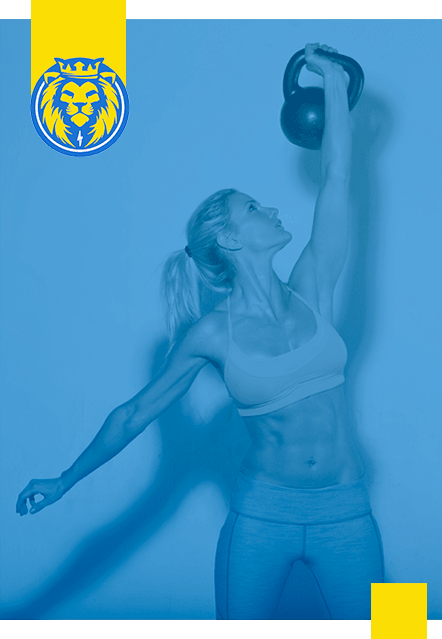
At Legacy Personal Training, we believe that long-term success in fitness doesn’t come from pushing harder or chasing perfection; it comes from showing up consistently, training with intention, and building habits that support your goals. Details matter when it comes to optimizing your performance, and that includes your movement quality, the structure of your workouts, and yes, even the shoes you wear in the gym. Although footwear might seem like a minor consideration, it plays a critical role in how your body functions during exercise. The foundation you stand on impacts everything above it, from ankle stability to knee alignment to the way your hips and spine handle load. Wearing the wrong type of shoe can throw off your mechanics, compromise your posture, and increase your risk of injury over time. If your goal is to build strength, improve your movement, and stay consistent without setbacks, paying attention to your footwear is a foundational piece of your fitness journey. When it comes to resistance training, your shoes are more than just a fashion choice. They’re a functional tool. Our feet are the first point of contact with the ground. The stability you create there determines how effectively you can lift, push, pull, and move weight. Many people wear heavily cushioned shoes like Hokas or Brooks for workouts because they feel comfortable. However, comfort does not equal function! These types of shoes are designed for long-distance running, not strength training. Their thick soles reduce stability and limit your body’s ability to properly align and engage through each rep. Shoes with very soft, cushiony soles may actually increase your risk of injury because they create instability and prevent proper force transfer through your feet, ankles, knees, and hips. When you're lifting, you want to be as close to the ground as possible. Flat shoes or barefoot shoes help you maintain a stable, grounded foundation. This improves balance, posture, and movement quality, allowing you to move with control and intention. More importantly, flat shoes give your joints a chance to do their job. Your feet contain more than 30 joints that are designed to absorb and transmit force naturally. When those joints are supported excessively by cushioned shoes, they become weaker and less adaptable. The result? A chain reaction that can lead to tight hips, sore knees, low back discomfort, and even plantar fasciitis. By training in flatter shoes like minimalist footwear or lifting shoes you're training your body to move the way it was designed to move. Switching to flatter shoes doesn’t mean you need to toss your old ones overnight, but it is a step worth taking if you want to improve your performance and joint health. Transitioning too quickly can lead to discomfort, especially because many of the small muscles in your feet and ankles have likely been underutilized from years of wearing overly cushioned shoes. When your footwear does all the work for you, your muscles don’t have to, and that leads to weakness, instability, and compensation patterns that affect your entire body. To ease the transition, start by wearing your new shoes around the house or during light activity. Then, slowly introduce them into your training sessions. Expect them to feel different at first, but within a week or two, your body will begin to adapt and strengthen in all the right places. If you’ve been told you need arch support or have flat feet, there are hybrid solutions available. High-quality insoles can be added to flat shoes to offer just enough support while still encouraging your foot to engage and move properly. Like any part of your training, success here comes from consistency. Give your body time to adjust, trust the process, and you’ll be surprised at how much stronger, more stable, and more connected you feel from the ground up. Here’s why this topic matters so much: if your workouts consistently leave you sore in all the wrong places like your joints instead of your muscles, you’re less likely to stick with them. Discomfort leads to avoidance. Avoidance leads to inconsistency. And inconsistency is the single biggest threat to your progress. At Legacy, we’re not just focused on helping you work out harder, we want you to work out smarter, feel better, and stay injury-free so that you can train for life. Proper footwear is part of that system. Everything we do from our initial assessments to our individualized programming and progress tracking, is designed to keep you moving forward safely and effectively. If you’re ready to upgrade your footwear and take your training to the next level, here are a few options recommended by our coaching team: Vivo Barefoot – A minimalist shoe that promotes natural foot mechanics and maximum ground feel. Nike Metcons – A popular flat-bottomed cross-training shoe that offers some versatility and structure. Nike Savaleos – Great for Olympic-style lifts with a slightly elevated heel for added range of motion. NOBULL Trainers – Flat, stable, and stylish — ideal for a wide variety of gym movements. We recommend avoiding ultra-cushioned shoes like Hokas or Brooks for strength training. They’re excellent running shoes, but limit your ability to generate force and maintain proper alignment in the gym. Switching your shoes might seem like a minor detail, but it’s often the small changes that lead to the biggest breakthroughs. Improving your alignment, posture, and movement mechanics can help you lift more weight, move pain-free, and recover faster, all of which support long-term consistency. And that’s the name of the game. If you’re serious about building a strong, healthy body that lasts for decades, start from the ground up. Literally. Want help optimizing your workouts, eliminating pain, and staying consistent in your fitness journey? Schedule your consultation with Legacy Personal Training and take the first step toward lasting results.The Best Shoes to Wear for Working Out
The Foundation of Performance Starts With Your Feet
Why Flat Shoes Improve Strength and Prevent Injury
Transitioning to Better Footwear: What You Need to Know
The Link Between Proper Footwear and Long-Term Consistency
Shoe Recommendations for Strength Training
Final Thoughts: Small Changes, Big Results

